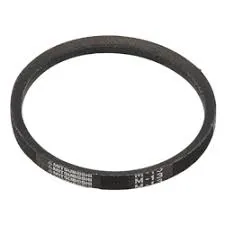- Arabic
- French
- Russian
- Spanish
- Portuguese
- Turkish
- Armenian
- English
- Albanian
- Amharic
- Azerbaijani
- Basque
- Belarusian
- Bengali
- Bosnian
- Bulgarian
- Catalan
- Cebuano
- Corsican
- Croatian
- Czech
- Danish
- Dutch
- Afrikaans
- Esperanto
- Estonian
- Finnish
- Frisian
- Galician
- Georgian
- German
- Greek
- Gujarati
- Haitian Creole
- hausa
- hawaiian
- Hebrew
- Hindi
- Miao
- Hungarian
- Icelandic
- igbo
- Indonesian
- irish
- Italian
- Japanese
- Javanese
- Kannada
- kazakh
- Khmer
- Rwandese
- Korean
- Kurdish
- Kyrgyz
- Lao
- Latin
- Latvian
- Lithuanian
- Luxembourgish
- Macedonian
- Malgashi
- Malay
- Malayalam
- Maltese
- Maori
- Marathi
- Mongolian
- Myanmar
- Nepali
- Norwegian
- Norwegian
- Occitan
- Pashto
- Persian
- Polish
- Punjabi
- Romanian
- Samoan
- Scottish Gaelic
- Serbian
- Sesotho
- Shona
- Sindhi
- Sinhala
- Slovak
- Slovenian
- Somali
- Sundanese
- Swahili
- Swedish
- Tagalog
- Tajik
- Tamil
- Tatar
- Telugu
- Thai
- Turkmen
- Ukrainian
- Urdu
- Uighur
- Uzbek
- Vietnamese
- Welsh
- Bantu
- Yiddish
- Yoruba
- Zulu
Oct . 11, 2024 19:08 Back to list
Understanding the Relationship Between Alternators and Timing Belts for Optimal Engine Performance
Understanding the Importance of the Alternator and Timing Belt in Your Vehicle
When it comes to maintaining a vehicle, many drivers focus on essential services like oil changes, tire rotations, and brake inspections. However, two critical components that often get overlooked are the alternator and timing belt. Understanding their functions and the impact of neglecting them is vital for vehicle longevity and reliability.
The Role of the Alternator
The alternator is an integral part of a vehicle's electrical system. Its primary purpose is to convert mechanical energy into electrical energy, thereby ensuring that the battery is charged and the electrical systems have sufficient power. Located under the hood, the alternator works in conjunction with the engine to keep the vehicle's electrical components functioning properly, from headlights and dashboard lights to power windows and air conditioning.
When the engine runs, the alternator spins, generating electricity. Typically, it produces between 13.5 and 14.5 volts, which is necessary to keep the battery charged while powering all electronic devices within the vehicle. A well-functioning alternator ensures that the battery does not drain and can start the engine. If the alternator fails, a driver may experience dimming lights, a dead battery, and ultimately an inability to start the vehicle.
The Timing Belt A Crucial Component
The timing belt is a strong rubberized belt that connects the crankshaft and camshaft within the engine. It coordinates the opening and closing of the engine's valves with the movement of the pistons. This precise timing ensures that the engine operates smoothly and efficiently. In many vehicles, the timing belt also drives components such as the water pump and the oil pump.
Neglecting the timing belt can lead to severe engine damage. If it wears out or breaks, the engine can experience catastrophic failure due to the pistons colliding with the valves. This kind of damage can be extremely costly to repair, making regular maintenance and timely replacement essential to preventing unwarranted expenses.
alternator timing belt

Interrelationship Between the Alternator and Timing Belt
The alternator and timing belt are not only crucial independently, but they can also affect each other. In terms of operation, the timing belt drives the alternator in many vehicles. Therefore, if the timing belt fails, it can result in the alternator not spinning, leading to the failure of the electrical system. This interconnectedness underscores the importance of regular checks and maintenance for both components.
Signs of Potential Issues
Recognizing early warning signs can help vehicle owners avoid unexpected breakdowns. For the alternator, if you notice dimming lights or weird noises (like a grinding or whining sound), these could indicate an issue. Additionally, if a warning light on the dashboard appears, it's wise to have the alternator checked.
For the timing belt, symptoms can be slightly different. Watch for unusual engine noises, especially a high-pitched sound, which can indicate a loose or damaged belt. A significant signal is the appearance of cracks or signs of wear on the belt itself. Many manufacturers recommend replacing the timing belt every 60,000 to 100,000 miles, so adhering to this timeline is crucial.
Conclusion
In summary, understanding the alternator and timing belt is critical for any vehicle owner. The alternator plays a pivotal role in the vehicle's electrical system, ensuring that all components receive sufficient power. Meanwhile, the timing belt is essential for the engine's operations, ensuring that everything runs smoothly and efficiently.
Both components are intertwined, and neglecting one can lead to issues with the other. Therefore, keeping an eye on their health through regular inspections and maintenance schedules can save vehicle owners from costly repairs and avoidable breakdowns. Protecting these components ensures a smoother driving experience and extends the life of the vehicle, underscoring the value of proactive vehicle care.
-
Upgrade Power Steering Pump Belt for Smooth, Quiet Operation
NewsAug.27,2025
-
Precision Timing Belt & Chain: Engine Performance & Durability
NewsAug.26,2025
-
Precision Lathe Drive Belts: Durable & Reliable Performance
NewsAug.25,2025
-
84.5 Serpentine Belt: Durable & Precision Fit for Your Engine
NewsAug.24,2025
-
Premium Ribbed Drive Belts for Quiet Power Transmission
NewsAug.23,2025
-
High-Performance Vehicle Timing Belt for Engine Precision
NewsAug.22,2025

